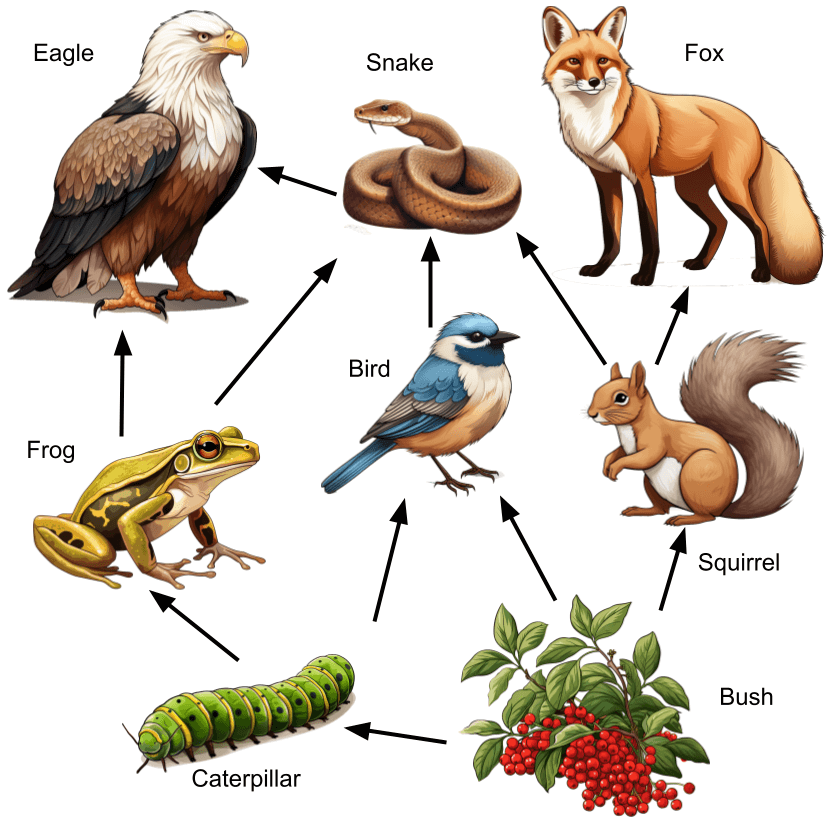Food webs are basic concepts in biology and ecology, where students learn the concept of energy flow in an ecosystem by viewing models of food webs. This labeling worksheet asks students to identify the primary, secondary, and tertiary consumers in a forest ecosystem.
A food web is a representation of the complex interrelationship between different organisms within an ecosystem, illustrating the transfer of energy and nutrients through various feeding relationships. It consists of interconnected food chains that depict the flow of energy from one organism to another. Here’s a general description of a typical food web:
- Producers (Autotrophs): At the base of the food web are the primary producers, such as plants, algae, and some bacteria. These organisms produce their food through photosynthesis or chemosynthesis and form the foundation of the food web by converting energy from the sun into organic matter.
- Primary Consumers (Herbivores): These are organisms that feed directly on the producers. They include herbivores like rabbits, deer, grasshoppers, and insects that consume plants for energy.
- Secondary Consumers (Carnivores): These organisms are the predators that feed on the primary consumers. They could be carnivores like snakes, frogs, or birds that prey on herbivores for sustenance.
- Tertiary Consumers (Top Predators): These are predators that occupy the highest trophic level in the food web. They feed on both primary and secondary consumers. Examples include top predators like lions, wolves, or sharks.
- Decomposers and Detritivores: Decomposers like bacteria, fungi, and some insects break down dead organic matter, recycling nutrients back into the ecosystem. Detritivores such as earthworms, some insects, and scavenging animals feed on decaying organic matter, aiding in its decomposition.

Students then identify which animals represent carnivores, herbivores and omnivores. As a final task, students must create their own food web that models an aquatic ecosystem.
Grade Level: 7-9
Time Required: 15 minutes

